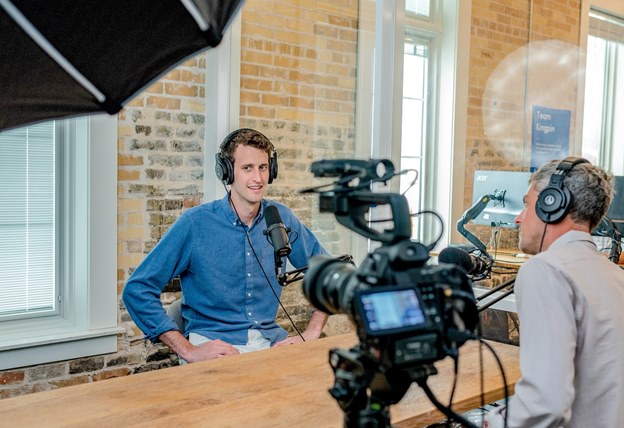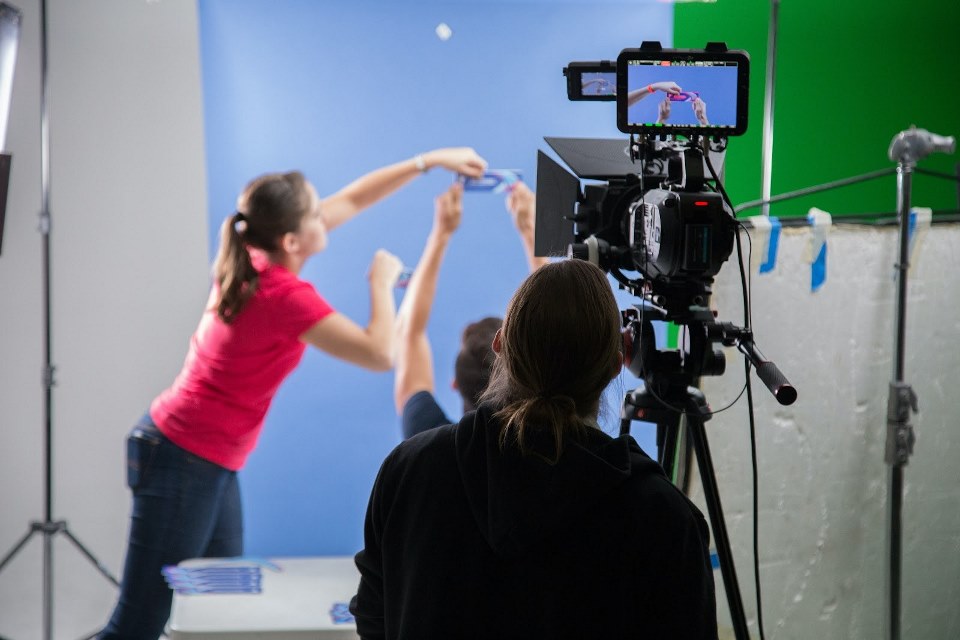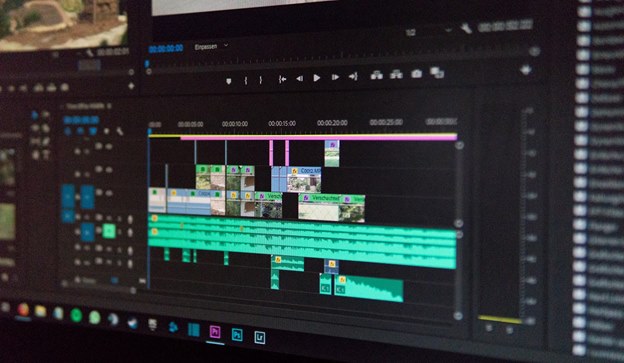How To Build Product Explainer Videos In 2022 – The Complete Guide
In the modern-day world of marketing, the written word is not enough. The most challenging aspect of connecting with your audience is explaining the value behind your products and services. Luckily, product explainer videos are perfect for that.
According to Forbes, 65 percent of your audience are visual learners. And while insightful blog posts can bring in leads, incorporating videos into your marketing strategy can accelerate the process. A report by Hubspot shows that 87% of marketers feel more positive about an investment offered by video than ever. About 86% of businesses use video marketing as a tool, 92% of marketers say video is an essential part of their strategy, and 81% reported that video has improved their company’s bottom line.
One of the best ways to start maximizing the benefits of videos is with an explainer video, which is popular and super effective. This guide will cover all you have to know about explainer videos, from types of explainer videos to tips for product video creation that will skyrocket your conversion rates.
Ready to see why explainer videos are a necessity for your business? Jump right in!
What Is An Explainer Video?
Explainers give new users a run of what your product or services are all about. They are short videos that highlight a business's idea in less than 90 seconds. Often a mix of live-action and animation to educate an audience, explainers also refer to how-to videos or instructional videos.
Why Explainer Videos Are So Effective
The best part of explainers is that they are straightforward and interesting—a clear message accompanied by attractive visuals to quickly grab the audience’s attention. In a survey by Wyzowl, 94% of consumers admitted they’d use an explainer video to learn more about a service or product. And this makes it one of the most popular types of video.
You can use explainer videos on landing pages, company ads, and even product pages. An explainer video is educational and informative: it provides an insight into what your company offers, how it solves your customer’s problems, and why your product or service is the best alternative.
What’s more? It does all that in a few seconds.
Explainers have the power to increase your conversion rates as people are more likely to buy a product once they’ve seen an accompanying video.
What Are the Types of Explainer Videos
As with most marketing decisions, the video type you choose depends on crucial aspects of your business. Here are some types of explainer videos:
2D Animations
It’s not surprising that animated explainer videos are easily the most widely used type of video. They use cartoons, illustrations, or whiteboard drawings in a two-dimensional style. Animations typically include colorful illustrations of humans, characters, objects, and backgrounds. Individual pictures are sequenced together to create an illusion of movement.
Thanks to advancements in technology, creators are now using 3D animation, which combines 3D models of objects and programmed movement. Unlike 2D animation, objects modeled in 3D environments can spin and turn.
When to use animations: Animated explainer videos are ideal for explaining abstract, intangible products such as software. Live-action videos might be impossible since the services or software possess very few physical features. Animations are also great for simplifying or explaining complex processes or subjects.
Whiteboard Animation
To create a whiteboard, an author physically draws and records an illustrated story using a whiteboard-like surface and marker pens.
Whiteboard animations have become extremely popular in digital marketing and are the at-the-top explainer of video trends of 2021. The format allows for ease of operation and low cost, making it one of the most affordable explainer videos. In addition, it may look fun or serious, depending on the mood of your videos and the way you want to position your brand before your audience.
When to use: Whiteboards are great for explaining the features of a product and how-to videos. Due to their versatility, whiteboards suit different types of industries and businesses.
Live-Action Explainer Videos
Live-action videos let you explain your product or service. However, unlike animated videos, you do it with real people. It is the product video tool for demonstrating tangible products. For instance, a company producing bread would be better off using live-action instead of animation. This is because most people would probably rather see a product or service in action than see it as an illustration.
Live-action is also ideal for connecting with your audience, especially if you run a personal business, like a restaurant or consulting firm. Seeing other people in your video can give them an emotional connection. This makes it an effective and powerful tool when telling your story.
When to use: This is great for people-oriented products and services. It helps connect with the viewer on an emotional level.
Motion Graphics Explainer Video
This type of video uses artwork combined with motion graphics. Motion graphics explainer brings graphics to life using animations, sound effects, and other cinematic techniques.
Though motion graphics seem similar to 2D animation, they are different. In motion graphics explainer videos, the creator accentuates the facts and ideas instead of the design. The design is only a supportive element throughout the whole video.
When to use: You can use it to demonstrate a process. They are not character-driven or story-based. Voiceover takes the leading role and tells the story behind the video.
Screencast Explainer Video
Screencast videos are a less expensive option than animated or live-action videos. They incorporate imagery from a screen while using software, website, or application functions. They effectively show users how to interact with new features or apps without the need to read many pages of text.
Creating a simple screencast video is easy and doesn't require many resources. However, though they're easy to shoot without professional help, it is essential to invest in quality when creating a video to represent your brand. You don't want to end up with a video without a script, zero voiceovers, and mediocre post-production.
When to use: Screencast is great for demonstrating the features of your services or products since everything happens right on the screen.
Kinetic Typography Explainer
This type of motion graphics animation animates text, numbers, graphs, and other visual elements. It is helpful when conveying data-heavy ideas to keep the story engaging.
The fonts take center stage in a kinetic typography animation and create the whole story. The voiceover will tell the story while the words on the screen emphasize their meaning.
This versatile storytelling technique pairs text with motion to convey ideas and evoke emotions in the videos. Most sites automatically mute videos when accessed by smartphones. Kinetic typography also brings the advantage of getting your message across even with the sound off.
When to use: Kinetics is great for giving life to data-focused videos. Suppose you want people to pay attention to your videos, even those opting for soundless viewing. It increases engagement by demanding attention from viewers, as they need to read words and follow along.
Step-by-step Guide to Creating An Explainer Video
Step 1: Choose a type of explainer video
As previously explained, you can select between live-action, animated, or whiteboard explainer videos.
Here are the pros and cons of each:
Live-action offers a human or emotional connection to your audience. It is excellent for demonstrating a tangible product and building credibility.
Disadvantages:
- It can be more expensive than animation
- Can be limited due to budget and location
Animation is ideal for explaining complex ideas. The best part is that it allows a lot of creativity when building skills. It also keeps both adults and children engaged.
Disadvantages:
- Not the best for building an emotional or personal connection
- It can seem too frivolous for some topics
Whiteboard animation is excellent for educational purposes. It improves audience retention and is effective in demonstrating a process.
Disadvantages:
- Due to the fixed style, longer videos can be monotonous.
Other factors to consider when choosing a video style or types are:
Marketing Goals: What are the goals for the video? The explainer video style you choose depends on what you want to achieve with your campaign. Is it to educate? Sell? Inform?
An explainer video can be:
- Educational: This includes tutorial-type videos that help business customers learn about products, services, or processes.
- Sales: These videos inform viewers about a product’s service or product to lead them down the sales funnel.
- Informative: This type of video provides information or instruction in a casual tone and can, at times, incorporate humor and simple, straightforward presentations. This helps it easy to relate to and digest.
Target Audience and Brand Personality: Is your brand laid back and playful? What type of video format will resonate well with your target audience? If your business topic is serious, then your explainer video should be too.
Step 2: Choose the Video Length
There is no specific or ideal length for an explainer video. The maximum length depends on the content it covers, its purpose, your target audience, and overall context.
The Content: The length of an explainer video that educates your audience on a complex topic will typically be longer than a short 30 second marketing video. However, if you have a lot of content to cover, break the topic into smaller sections, as videos longer than 15 minutes may affect watch time.
The Purpose and Context: Are you looking to grab attention? Then shorter videos are probably better as human attention span is meager – below 8 seconds. A report by Hubspot shows that most smartphone viewers choose videos in under 5 minutes. So consider the platforms and devices where your audience will watch your product explainer videos.
The target audience: Are your target audience more interested in long-form content? Or would they prefer bite-sized information? Create your videos based on your audience’s expectations.
Video Length Tips:
- Grab viewers' attention for the first 19 seconds of your video to ensure they keep watching.
- Don't overstuff your video with information. Explainer videos can't always cover everything. Instead, create a video series and break your topic into multiple sections.
Step 3: Write the Script
The next thing is to research the topic and write the script. This will help you visualize your video. You'll be able to plan your shots, saving time and effort while shooting.
An explainer video is as good as its script. Even if you use world-class visuals, a weak script will sabotage your effort. A strong story drives your visual and audio components.
However, most brands struggle to write a compelling script. The reasons are not far-fetched. Distilling complex topics into an engaging story that shows your brand personality and gets the message across are complicated. Moreover, you have to do all these in a limited word count.
Here are steps to create a good script:
Identify your story: If you're creating a problem-solution video to position your product as a hero in the viewer's life, make the problem evident and relatable. Then make a natural transition to the solution using the story arc.
On the other hand, you may want to create a process overview or how-to video. Outline your narrative clearly, moving from one point to the other cleanly and effectively.
Be straightforward and confident, anticipate the reader's questions, and get to the point quickly. Tell one specific story clearly and concisely. It's also crucial to speak directly to your viewer and bring them into the story.
Answer these questions:
- What are my goals for this story?
- What's my angle (how are you making viewers' lives easier?
- Why would people care (are you addressing their pain points)?
- What value will this provide?
- What is the takeaway message (what should they do next)?
Answering these questions will give you a good sense of the goal and purpose of your script. Create a rough draft with these questions in mind and add details.
The type of explainer video you're making will determine the amount of detail in your script. For Videos that include interviews or testimonials, you cannot plan the exact dialogue. But brand explainer videos have detailed scripts where the writer carefully chooses and edits every word.
When you're done with the script, practice reading your script aloud. Do your words sound conversational enough? Reading the script loud will also give you an idea of how long your video might be. However, there's a trick to adjusting content within a time frame – tracking the number of words in your script.
Examples:
- 75 words roughly translate to 30 seconds video
- 150 words would produce an estimate of a 1-minute video
- 225 words roughly translate to a 90 seconds video
Step 4: Record and Edit
You have your script ready. What next? It's time to record your voiceover narration. This section will highlight how to record your audio and suggestions on equipment and software that you can use to record your narration.
How to record your audio? You can either use a professional recording artist or do it yourself. Keep these tips in mind:
- Choose a quiet place to record: Ensure the place you do the recording is quiet with minimal noise or interruptions. Alternatively, use a recording studio if you have a budget for it.
- Use recording software: With recording software, you'll be able to remove unwanted background noises and adjust levels. You can try out free available options like Audacity.
- Use a mic: Your smartphone or built-in laptop mic will pick up a lot of noise and provide low clarity. As such, it's best to invest in a mic.
- Keep a distance from the mic: Staying too close to the mic while recording will make your words unclear or loud. Move at least 6 inches away.
- Do a level check before recording: If your audio is too soft or too loud, it will be challenging to remit additional background noise at the editing stage properly.
- Read from the screen instead of paper: This will block out additional noise from the shuffling of the paper.
Audio Equipment for recording your narration: Options include:
- Shotgun mic: Easily mount in your camera and are great for interviews.
- Lapel mic: Small mics that easily clip to your shirt and plug straight into your cell phone or camera. Great for creating videos from your desk and for interviews and outdoor recording.
- Podcast mic: Versatile indoor mics connect directly to your system and provide clear audio output. They are great for creating live streams and screen-sharing tutorial videos.
Step 5: Source for Media
The next stage entails putting together all the visuals and animations you'll need to complete the video. Mark out the visuals that best demonstrate what you want to say. Once you have your list ready, start compiling them together. No matter the type of video style you choose, graphics, text, animations, or B-roll forage is essential to make it more engaging for viewers.
You can either use the services of a professional graphics designer to have well-made graphics. If you can't hire a professional, keep the graphics simple, ensuring they illustrate the point you're trying to make.
Look for stock images and video clips online from sources such as Pexels, Freepik, and Canva, if you can't necessarily shoot your video. You will also need royalty-free music and text stickers at your disposal to create a product demo video.
Step 6: Put Everything Together
Now that you've gathered all the media assets you need, it's time to edit and arrange the media.
The editing stage is when you remove bad takes, long pauses, and background noise you find. This process gets your voice as straightforward as possible for a smooth-sounding narration.
Cut out any unimportant footage to your message and focus on your core message. This is more important than adding many effects to impress your viewers. Start a project in any video editor you're familiar with. Options can include Lightworks, PremierPro, and Movie Maker.
Make the cuts, add effects, elements, transitions, and text. Then add some background music. Remember to ensure the music has the correct copyright license before adding your video. Your video could get taken down if it violates any copyright law. Your best bet is to use audio files in the public domain or have a creative commons license. You can also check the YouTube Audio Library for tons of tracks you can use.
Step 7: Publish and Track Performance
Now you're ready to publish your video!
The most popular video hosting platform you can put your video on is YouTube. This platform is an excellent option if you're looking to get discovered or advertise to a large audience. Besides, you get all the video creation tools to get your video online. Youtube lets you embed it in your website or any other location. You can also track it with metrics to see the number of views. If you aim to drive traffic to your website or improve onsite conversions, Vidyard, Vimeo, or a paid option like Wistia works better.
Avoid hosting videos directly on your website. You won't get the performance metrics offered by these mentioned platforms. In addition, your videos won't be easily shareable. If you have to host it on your website, upload a duplicate version to one of those platforms mentioned earlier. They will provide key analytics and insights which you can use to inform your overall marketing strategy and improve your video engagement.
Features of a Great Explainer Video
Here are some best practices for making make professional-level explainer videos:
- Short: Keeping them under 1 minute is an excellent strategy to hold the viewer's attention to the end.
- Simple: Keep your narration clear and concise. The main questions should be 'What,' How, and Why.'
- Address customer pain points: Aim to focus on questions your target audience may have about
- your brand or product.
- High quality: The video is a reflection of your brand. Low-quality videos could harm your credibility as a brand. To ensure the quality is high.
- Brand colors: Use your brand's color palette so viewers can instantly recognize it and associate it with your brand.
- Set the tone with music: Use appropriate and attention-grabbing tunes in your video.
- Professional voice-over: Use a voice that reflects your audience to connect with them instantly.
- Great voice: A well-written script is the foundation of any good voiceover. Then hire a professional voiceover artist if necessary.
In Conclusion
Videos have not only become a part of life but also a valuable business promotion tool. Depending on your goals and target audience, the videos vary from promotions to tutorials, allowing you to spread the word about your brand. With the tips highlighted in this guide, you'll be able to create top-notch explainer videos that will attract your audience's attention and increase conversions.




